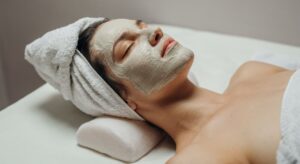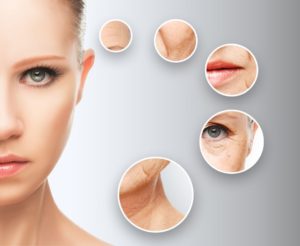Botox and Dermal Fillers are both widely known non-surgical cosmetic procedures that provide excellent results with minimal invasiveness. They effectively address wrinkles and signs of aging. However, it is important to understand the distinctions between these treatments in terms of their applications, effectiveness, pricing, and potential adverse effects. This guide aims to assist you in distinguishing between the two and selecting the most suitable treatment for your needs.
Botox
Botox, also known as Botulinum toxin, is derived from a type of bacteria called clostridium botulinum. When injected, it causes muscle paralysis and helps reduce the appearance of wrinkles on the skin.
Botox has been utilized for an extended period for addressing medical issues such as migraine headaches and hyperhidrosis. When used as a cosmetic procedure, its effectiveness lies in treating dynamic wrinkles such as frown lines, lines between the eyebrows, crow’s feet, wrinkles around the lips, and under-eye wrinkles. It is ineffective for treating fine lines caused by collagen degradation. The outcomes of Botox treatment typically endure for a period of 3-6 months, varying depending on the person.
Side Effects
The side effects from Botox treatment are usually not severe. You may have some bruising or sensitivity where the injection was given. It is common to experience headaches on the first day of treatment. Although very uncommon, there are more serious side effects that can occur, such as severe allergic reactions, symptoms similar to the flu, skin rashes, dizziness, or difficulty breathing. Before your treatment, we will give you all the information you need about these potential reactions.
Is It Safe?
Most individuals can safely undergo the treatment unless they are pregnant or experiencing rare neurological conditions such as myasthenia gravis.
Dermal Fillers
Dermal fillers, which are injectable substances, are used to increase the volume of sunken areas. These can effectively treat any folds, crevices, creases, or wrinkles on the skin.
There are two primary categories of fillers available – one is composed of hyaluronic acid, while the other is made using calcium hydroxyapatite.
Hyaluronic acid is a naturally occurring substance in the skin that helps to maintain hydration and fullness. When the levels of hyaluronic acid decrease, this can lead to the development of wrinkles and fine lines. However, there are dermal fillers containing hyaluronic acid that can be injected into specific areas with less volume in order to restore a fuller appearance. Typically, the effects of these fillers last between 6 to 12 months.
In your bones, there can be found calcium hydroxyapatite. This substance is utilized in dermal fillers, where it is combined with a gel to form microscopic particles. Unlike hyaluronic acid fillers, this gel is thicker and the effects of the fillers last for a longer period of time. Furthermore, it assists in improving the production of collagen naturally and is particularly effective in treating deep lines and wrinkles.
Poly-L-lactic acid is an additional synthetic substance employed for replenishing lost volume in the skin, which can endure for a maximum of 2 years.
Side Effects
In general, the treatment is considered to be safe with rare occurrences of severe side effects. However, there may be moderate side effects such as allergic reactions, bruising, itching, redness, scarring, or numbness. The effects may last for a duration of 6 to 12 days. To alleviate long-term swelling, the application of ice packs can be effective.
Is It Safe?
It is advisable to avoid receiving dermal filler treatment if you are pregnant, have allergies to the ingredients used in the injections, or have experienced an infection from a prior dermal filler procedure. However, dermal fillers made by reputable and genuine brands are typically considered safe.
Which One is Better?
The response to this inquiry primarily relies on what the patient requires and wants. The process of skin aging differs from individual to individual, influenced by genetics, lifestyle, and other elements.
- Botox is effective for reducing fine lines on the forehead, however, it may not be as effective in treating the more prominent wrinkles above the eyebrows.
- Botox and fillers are both highly effective in treating wrinkles around the under eye area. Botox is particularly effective at preventing crow’s feet, raising the eyebrows, and giving the eyes a more youthful appearance. On the other hand, fillers can be used to add volume to the wrinkled areas surrounding the eyes.
- Cheeks- Dermal Fillers is the perfect procedure for enhancing the shape and definition of your cheeks. It effectively enhances and elevates your cheekbones, granting you a beautifully natural outcome.
- Both procedures are effective for enhancing the appearance of your lips. Dermal fillers reduce the appearance of fine lines and increase moisture and plumpness in the lips. Botox relaxes the muscles in the lips, giving them a more defined shape and making them appear larger and fuller.
The Cost
Botox and dermal fillers are popular cosmetic treatments that can be found easily. The price will typically vary depending on the specific area of the face being treated, the expertise of the doctor or trainer, and the clinic. While Botox is generally cheaper than dermal fillers, the effects of fillers tend to last longer than Botox.
Final Thoughts
It is safe to undergo Botox and dermal fillers if a skilled dermatologist administers them. The patient needs to be informed about the potential risks and results of these treatments. Pregnant and breastfeeding women should refrain from undergoing these procedures.
Botox and dermal fillers significantly improve the way you look, but they are not as effective as a facelift, which is a surgical procedure. It is important to always seek a reliable and respected dermatologist who can assist you in attaining optimal outcomes.
*Information in this article is not medical advice and may not be factually accurate. It is intended for entertainment purposes only. Consult with a physician before attempting any tips in this blog post and to get the most up to date factual data about any procedure or treatment.













